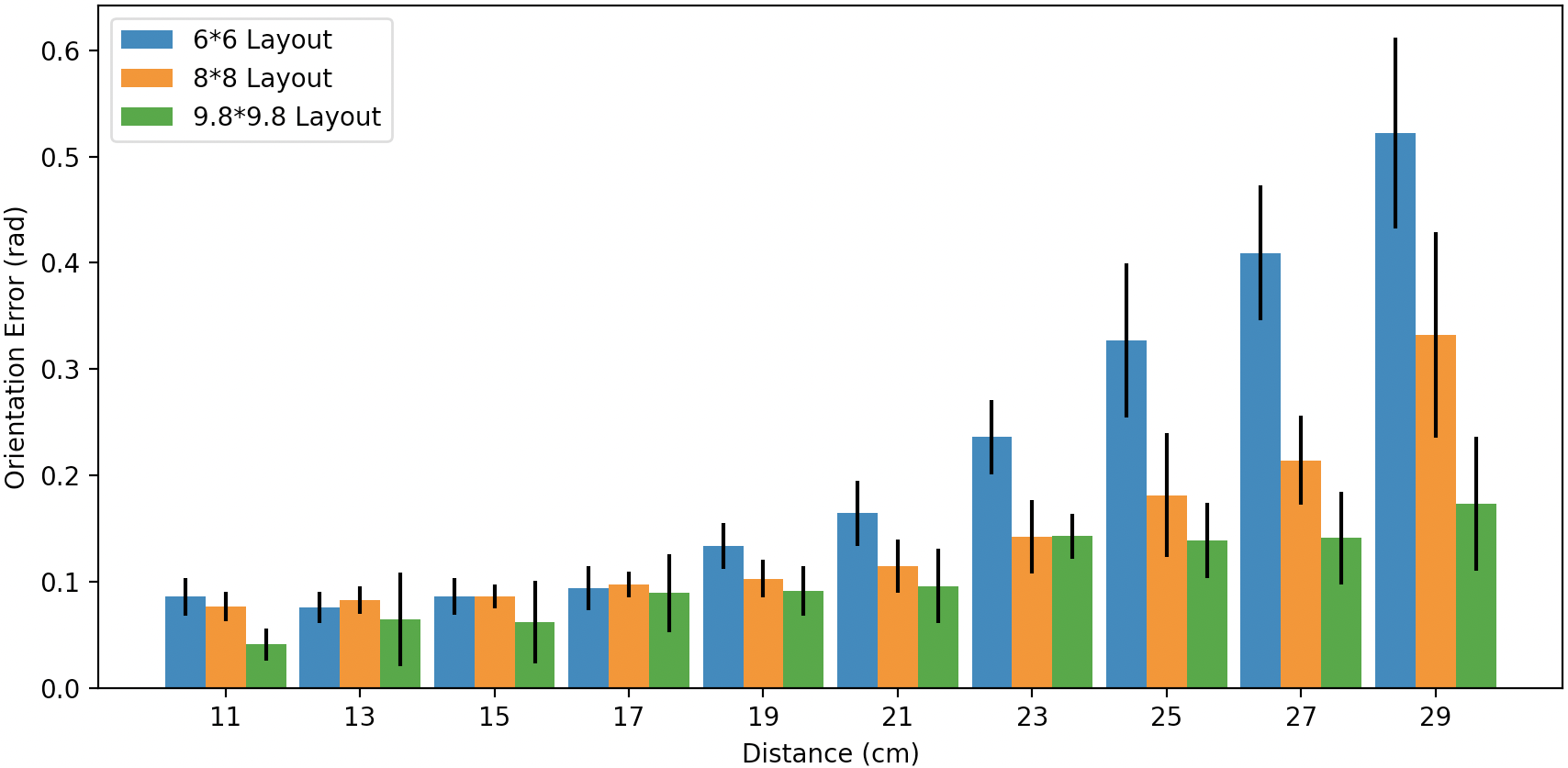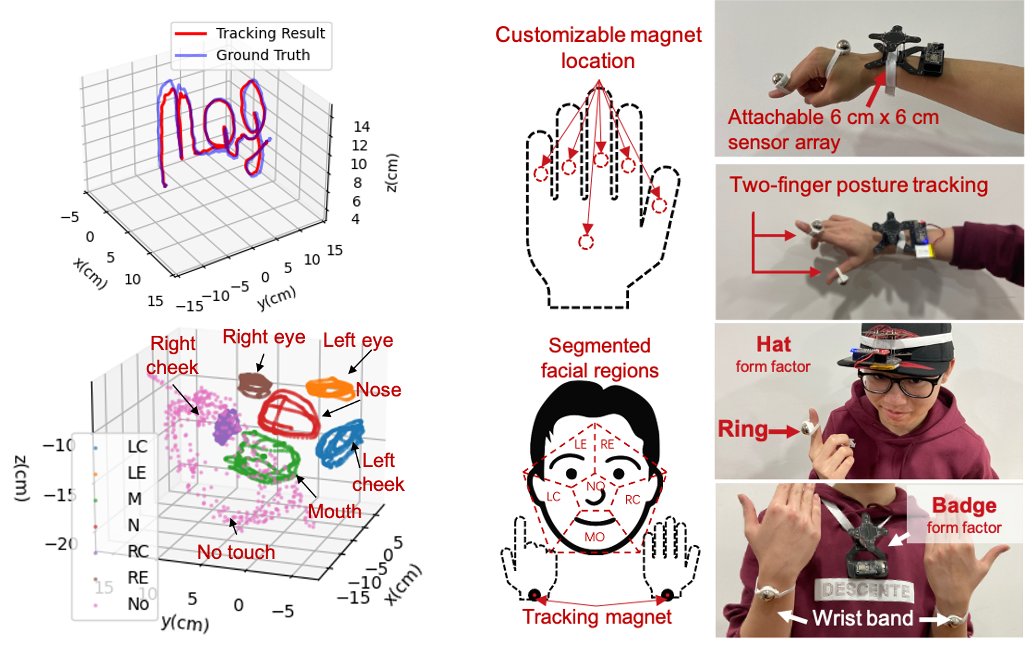Abstract

Accurate tracking of the hands and fingers allows users to employ natural gestures in various interactive applications. Hand tracking also supports health applications, such as monitoring face-touching, a common vector for infectious disease. However, for both types of applications, the utility of hand tracking is often limited by the impracticality of bulky tethered systems (e.g., instrumented gloves) or inherent limitations (e.g., Line of Sight or privacy concerns with vision-based systems). These limitations have severely restricted the adoption of hand tracking in real-world applications. We present MagX, a fully untethered on-body hand tracking system utilizing passive magnets and a novel magnetic sensing platform. Since passive magnets require no maintenance, they can be worn on the hands indefinitely, and only the sensor board needs recharging, akin to a smartwatch.
Technology

Overview
We optimized the layout the magnetometer array and the passive magnets for daily usage. MagX can perform all compute locally and only requires 0.38W total (220mW on the sensor platform plus 159mW on the computing unit) to perform real-time tracking, offering "all day" fully untethered operation on a typical smartwatch-sized battery. Since passive magnets require no maintenance, they can be worn on the hands indefinitely, and only the sensor board needs recharging, akin to a smartwatch.

Performance
We used MagX to conduct a series of experiments, finding a wearable sensing array can achieve millimeter-accurate 5 DoF tracking of two magnets independently. For example, at 11 cm distance, a 6cm × 6cm sensing array can achieve positional and orientational errors of 0.76 cm and 0.11 rad. At 21 cm distance, the tracking errors are 2.65 cm and 0.41 rad. MagX can leverage larger sensor arrays for improved long-distance tracking, e.g., a 9.8cm × 9.8cm array can achieve 2.62 cm and 0.55 rad tracking performance on two magnets at 27 cm distance.

Applications
The robust performance can facilitate ubiquitous adoption of magnetic tracking in various applications. For example, face touching detection for healthcare application, remote control for AR/VR and Metaverse.
Yes, we open sourced the project
We release the latest design of MagX for academic uses. Please also contact us for further questions.
Cite Our Work
Dongyao Chen, Mingke Wang, Chenxi He, Qing Luo, Yasha Iravantchi, Alanson Sample, Kang G. Shin, and Xinbing Wang. 2021. MagX: wearable, untethered hands tracking with passive magnets. In Proceedings of the 27th Annual International Conference on Mobile Computing and Networking (MobiCom '21). Association for Computing Machinery, New York, NY, USA, 269–282. DOI:https://doi.org/10.1145/3447993.3483260
The Team
We are an international team, albeit the COVID-19 pandemic and different time zones, formulated by researchers from Shanghai Jiao Tong University (SJTU) and the University of Michigan, Ann Arbor.
